Ever found yourself scrolling through social media, captivated by a seemingly simple yet incredibly powerful image? Chances are, it was a piece of line art, particularly one depicting the elegant form of a woman. The “line art woman body” aesthetic has taken the world by storm, gracing everything from minimalist tattoos and chic home decor to digital illustrations and fashion. It’s more than just a drawing style; it’s a celebration of feminine beauty, strength, and vulnerability, distilled to its purest essence. This art form speaks volumes with a whisper, inviting us to appreciate the subtle curves, the confident stances, and the quiet power inherent in the female silhouette. In a world often cluttered with complexity, line art offers a refreshing return to simplicity, an embrace of form that feels both ancient and utterly modern.
The Enduring Allure of Line Art
Line art, in its essence, is any image or design that consists of distinct straight or curved lines placed against a background, without gradients or shades. It’s one of the oldest forms of human artistic expression, tracing its roots back to cave paintings and ancient etchings. What makes it so compelling, particularly when applied to the human form, is its immediate readability and its ability to suggest detail without explicitly drawing it.
The human body has been a muse for artists since time immemorial, revered for its complexity, grace, and expressive potential. When stripped down to lines, the woman’s body transforms into a symbol of universal beauty and emotion, transcending individual features to highlight the foundational elegance of shape and posture. This minimalist approach allows the viewer’s imagination to fill in the blanks, creating a deeply personal connection with the artwork. The power of simplicity here isn’t a lack of effort; it’s a sophisticated technique that emphasizes form, movement, and the subtle interplay of positive and negative space. It’s about capturing the soul of a subject with the fewest possible strokes, making each line carry significant weight and meaning. This economy of line is what gives these pieces their striking impact and timeless appeal.
Deconstructing the “Line Art Woman Body” Aesthetic
What exactly is it about the “line art woman body” that resonates so deeply with so many? It boils down to a few key elements that are masterfully employed to create a profound visual experience.
Minimalism at its Core



The very heart of this aesthetic is minimalism. It’s the idea that less is truly more. By reducing the figure to its essential outlines, artists force themselves and the viewer to focus on the fundamental shapes and rhythms of the body. This isn’t about photorealism; it’s about capturing an idea, a feeling, a moment, with elegant precision. The absence of color or heavy shading draws attention to the purity of the form itself, allowing it to stand out boldly against any background. This simplicity also makes it incredibly versatile, fitting seamlessly into diverse interior design styles or personal aesthetics without overwhelming them.
Emphasizing Form and Flow
Line art excels at highlighting the natural curves, contours, and dynamic flow of the female body. Each line is carefully considered, often continuous or flowing, to guide the eye smoothly across the figure. This creates a sense of movement and grace, whether the subject is standing tall, lounging gracefully, or engaged in a dance. The artist’s skill lies in using these lines to convey weight, balance, and emotion, transforming a static image into something alive and fluid. It’s about the poetry of motion captured in a single, unbroken stroke.
Emotional Resonance
Despite their visual simplicity, these pieces are often charged with emotional depth. A gentle curve can suggest vulnerability, a strong, upright line can imply confidence, and a subtle tilt of the head can evoke introspection. Artists frequently use body language and gesture to communicate narratives without needing facial expressions or intricate details. This allows for a broad interpretation, enabling viewers to project their own feelings and experiences onto the art, making it profoundly personal and universally relatable. It’s a powerful testament to how much can be conveyed through the subtle nuances of human posture and form.
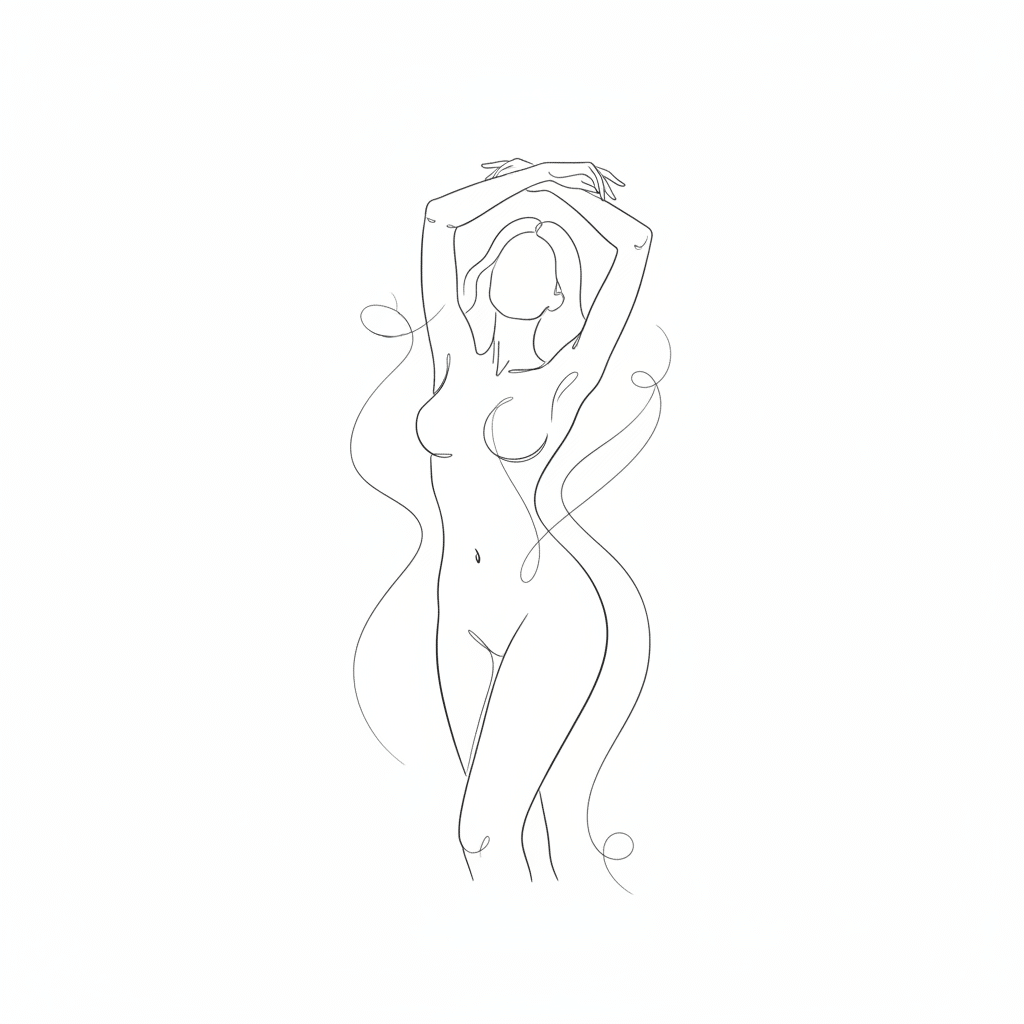
Versatility: From Abstract to Semi-Realistic
One of the most appealing aspects of line art woman body pieces is their incredible versatility. While always maintaining a minimalist approach, the style can range from almost purely abstract, where the lines might barely suggest a figure, to semi-realistic, where key anatomical details are hinted at with delicate precision. This spectrum allows artists to explore different levels of abstraction and expressiveness, appealing to a wide range of tastes. Whether you prefer a highly stylized representation or a more recognizably human form, there’s a line art style to match. This adaptability also contributes to its widespread appeal across various mediums and applications.
Where to Find and Create Your Own Line Art Woman Body Pieces
The accessibility and universal appeal of line art mean it pops up in countless places, and there are many avenues if you’re looking to create your own.
Digital Art & Illustration
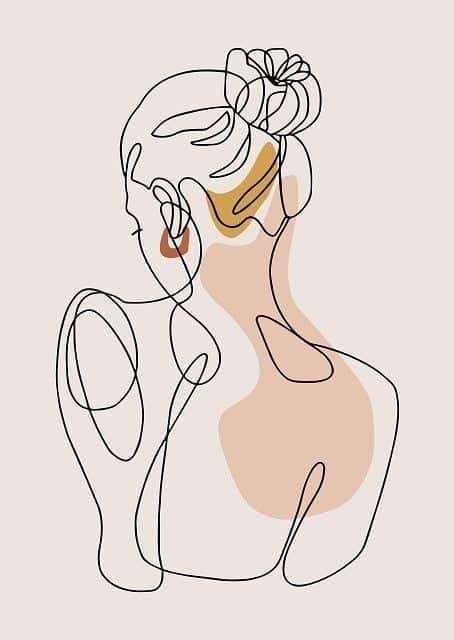
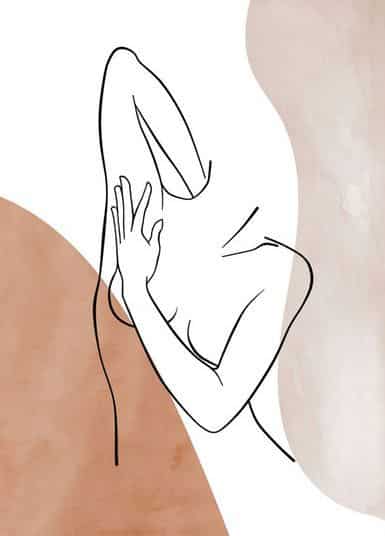
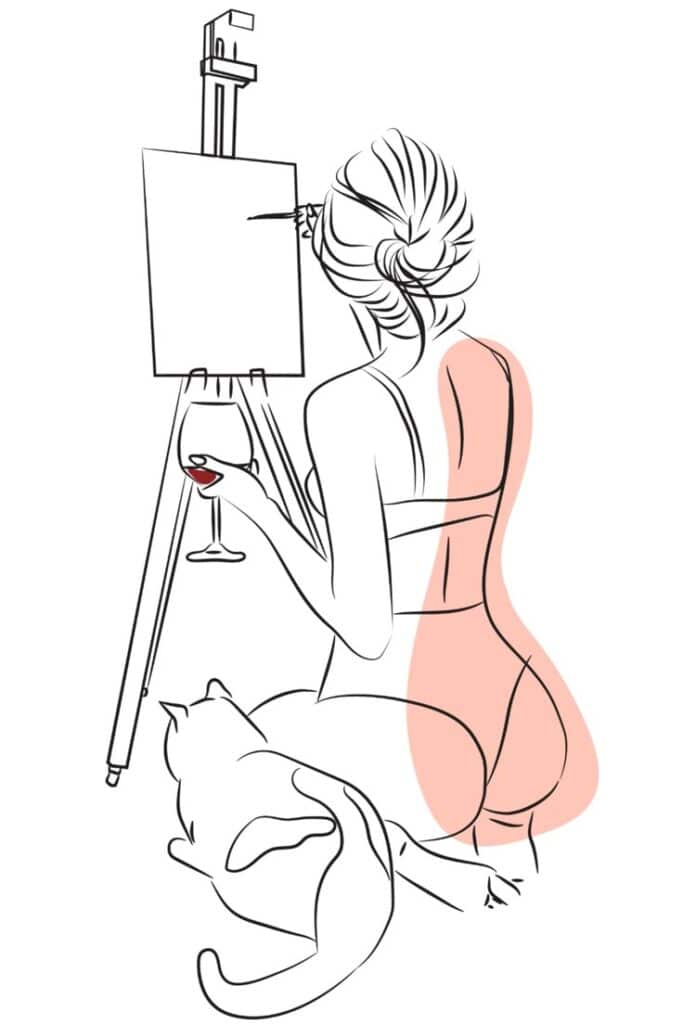
Digital platforms have revolutionized line art, making it easier than ever to create, share, and consume. Artists use software like Procreate, Adobe Illustrator, or Clip Studio Paint to draw with precision, experiment with different brush strokes, and easily duplicate or modify their work. Instagram and Pinterest are treasure troves for discovering digital line artists, many of whom offer prints or even custom commissions. The digital medium also allows for animation, bringing these static forms to life in new and exciting ways.
Traditional Mediums
Before the digital age, line art thrived in traditional mediums. Ink on paper remains a classic choice, offering crisp, unforgiving lines that demand confidence and skill. Pencil drawings can achieve softer, more nuanced lines, while charcoal allows for bolder, more expressive strokes. Many artists prefer the tactile experience of traditional tools, appreciating the slight imperfections and unique textures that digital art sometimes smooths away. Exploring these traditional techniques can be incredibly rewarding, offering a direct connection to the fundamental act of drawing. You can even find inspiration for your own unique pieces by looking at 12 pencil drawing ideas to get started.
Tattoo Art



Perhaps one of the most popular applications of the line art woman body is in tattooing. The clean, elegant lines translate beautifully onto skin, creating designs that are both striking and understated. From small, intricate ankle tattoos to larger, flowing back pieces, line art offers a sophisticated way to express oneself permanently. Its minimalist nature often means it ages well and can be highly personalized. Many choose these designs to symbolize personal growth, self-love, or to simply adorn their bodies with beautiful, artistic forms. If you’re considering something more elaborate, you might explore ideas for female sleeve tattoos that incorporate similar flowing elements.
Home Decor

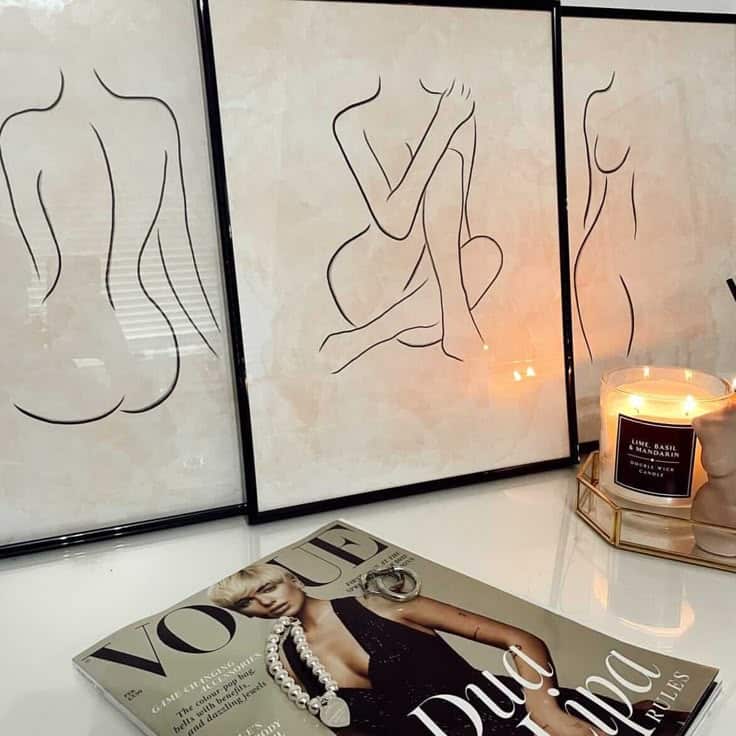

Line art prints and canvases are incredibly popular for modern and minimalist home decor. They add a touch of sophistication and artistic flair without overwhelming a space. Whether it’s a large statement piece above a sofa or a collection of smaller prints in a gallery wall, these artworks can instantly elevate a room’s aesthetic. They work particularly well in neutral palettes, allowing the stark lines to become the focal point. Beyond prints, you can find line art forms integrated into sculptural pieces, vases, or even woven textiles, bringing this aesthetic into three dimensions.
Fashion & Jewelry



The allure of line art has also extended into fashion and jewelry design. You’ll find minimalist line drawings on t-shirts, tote bags, and accessories, offering a subtle yet artistic statement. In jewelry, delicate pendants or earrings often feature abstract or semi-abstract wire forms that mimic the continuous lines of this art style. These pieces provide a way to carry a piece of art with you, expressing your appreciation for simplified beauty and the human form. For those who appreciate unique adornments, choosing jewelry with a personal touch often involves such artistic interpretations.
The Symbolism Behind the Lines: More Than Just an Image
While visually striking, the “line art woman body” often carries deeper symbolic meanings, contributing to its profound impact and widespread embrace. These aren’t just pretty pictures; they’re statements.
Body Positivity and Acceptance
In an era increasingly focused on body positivity and self-acceptance, line art celebrates the female form in its diverse glory without hyper-sexualization or idealization. By stripping away intricate details, it removes the emphasis on specific features often scrutinized by societal standards. Instead, it focuses on the beauty of the overall silhouette, promoting an appreciation for the body as a whole. This inclusive approach empowers individuals to see beauty in all shapes and sizes, fostering a more accepting and loving relationship with their own bodies.
Feminine Strength and Grace
The fluidity and confidence conveyed through simple lines often symbolize the inherent strength and grace of women. Whether depicted in a powerful stance or a serene pose, the figures exude an understated resilience. The elegant curves and balanced compositions speak to the multifaceted nature of femininity – gentle yet powerful, soft yet enduring. This art form often serves as a quiet ode to the enduring spirit and inherent beauty of women, celebrating their various roles and journeys.
Connection and Unity
Many line art pieces feature interconnected or continuous lines, which can symbolize unity, connection, and the intricate web of human relationships. When multiple figures are depicted, they often appear intertwined or in harmony, reflecting bonds of sisterhood, friendship, or universal human connection. Even a single figure can evoke a sense of internal unity, representing the integration of mind, body, and spirit. This theme resonates strongly with those seeking art that speaks to togetherness and the shared human experience.
Vulnerability and Authenticity
The exposed nature of a line art figure, unadorned by clothes or elaborate settings, can also symbolize vulnerability and authenticity. There’s a raw honesty in these simple forms, inviting viewers to connect with the subject on a deeper, more genuine level. This willingness to be seen in one’s pure form can be a powerful statement about self-acceptance and the courage to be authentic in a world that often demands conformity. It’s an embrace of the true self, stripped of pretense.
Getting Started: Tips for Aspiring Line Artists (or Collectors)
Whether you dream of drawing your own minimalist masterpieces or curating a stunning collection, here’s how to dive into the world of line art woman body.
For Aspiring Artists:
- Start with Reference Images: Don’t feel pressured to draw from imagination immediately. Use photographs or live models as your guide. Focus on capturing the overall gesture and form rather than getting caught up in tiny details. Websites dedicated to figure drawing offer extensive reference libraries. A great place to start learning figure drawing is by practicing with a body base drawing to understand proportions and anatomy.
- Practice Continuous Line Drawing: This technique involves drawing an entire figure without lifting your pen from the paper. It forces you to focus on the flow and connection of lines, developing a more intuitive understanding of form and movement. It’s a fantastic exercise for loosening up and trusting your eye.
- Experiment with Different Tools: Try various pens, markers, or digital brushes. Each tool has a unique feel and can produce different line qualities. A fine-liner pen gives crisp, precise lines, while a brush pen offers more expressive, variable strokes. Discover what feels most natural and expressive for you.
- Focus on Gesture and Emotion: Remember, line art is about capturing the essence. Try to convey the feeling or mood of the pose. Is it strong, relaxed, dynamic, or introspective? Let your lines communicate these emotions. Don’t be afraid to exaggerate slightly to emphasize a particular quality.

For Collectors/Enthusiasts:
- Define Your Style Preference: Do you prefer abstract or more defined figures? Do you like bold, thick lines or delicate, wispy ones? Are you drawn to specific poses or emotional expressions? Knowing your preferences will help you narrow down your search.
- Look for Reputable Artists/Sources: Support independent artists on platforms like Etsy, Instagram, or dedicated art marketplaces. Read reviews, check portfolios, and ensure the quality of their prints or original works. Many artists also offer digital downloads that you can print yourself.
- Consider Framing and Display: The right frame can significantly enhance a line art print. Minimalist frames in black, white, or natural wood often work best, allowing the artwork to shine. Think about how the piece will integrate into your existing decor and where it will have the most impact.
- Think About Personalized Touches: Many artists offer custom line art based on photos or descriptions. This is a wonderful way to create a truly unique piece that holds personal significance, perhaps commemorating a special moment or celebrating a loved one. The trend towards jewelry with a personal touch extends to art, too.
Integrating Line Art Woman Body into Your Space or Style
Line art is incredibly versatile, making it easy to weave into almost any aspect of your life.
Digital Backgrounds
Beyond physical art, line art woman body designs make fantastic digital backgrounds. Set them as your laptop wallpaper, phone lock screen, or tablet background. Their clean aesthetic is visually appealing and doesn’t clutter your digital workspace. You can find countless free or paid options online, or even create your own custom designs to personalize your devices. Imagine a calming line art piece as your iPad wallpaper, offering a moment of aesthetic pleasure every time you glance at your screen.

The Future of Line Art and Feminine Representation
The popularity of the “line art woman body” shows no signs of waning. As society continues to champion diverse representations and body positivity, this art form is perfectly positioned to evolve and grow. We can anticipate even more innovative interpretations, with artists exploring new technologies like AI-generated art to create unique forms, while simultaneously maintaining the handmade charm of traditional methods.
The conversation around feminine representation in art will only deepen, and line art offers a powerful, accessible way to contribute to that dialogue. Expect to see artists continue to challenge conventional beauty standards, celebrating a wider array of body types, experiences, and cultural backgrounds through the simple power of the line. The future promises a rich tapestry of creativity, where this elegant art form continues to inspire, provoke thought, and celebrate the timeless beauty of the human spirit.
Embracing the line art woman body aesthetic is about more than just admiring pretty pictures; it’s about appreciating the profound beauty found in simplicity, celebrating the strength and grace of the feminine form, and finding deep emotional resonance in powerful, understated art. Whether you’re an artist looking to create, a collector seeking inspiration, or simply someone who appreciates beauty, this unique style offers a compelling way to connect with art and self. So, take a moment to pause, look closely at the lines, and let their quiet power speak to you.
Frequently Asked Questions
What makes line art of the woman’s body so popular?
Its popularity stems from its minimalist nature, emphasizing the elegant form and flow of the body with simple, continuous lines. This approach allows for broad interpretation, fosters body positivity, and provides a sophisticated aesthetic that fits well across various mediums from tattoos to home decor.
Is line art a new trend, or does it have historical roots?
Line art is one of the oldest forms of human artistic expression, dating back to ancient cave paintings. While its modern interpretation with the woman’s body has gained significant traction recently, the fundamental technique of using lines to depict form is timeless.
Can anyone create line art of the human body?
Yes, with practice, anyone can create line art. Starting with reference images, practicing continuous line drawing, and experimenting with different tools are great ways to begin. The focus is on capturing gesture and emotion, rather than perfect anatomical precision.
What kind of symbolism is often associated with line art woman body pieces?
These pieces often symbolize body positivity, celebrating diverse female forms. They can also represent feminine strength, grace, vulnerability, authenticity, and themes of connection and unity through their flowing and often interconnected lines.
How can I incorporate line art woman body pieces into my home decor?
Line art prints and canvases are excellent for wall art, either as a single statement piece or part of a gallery wall. Their minimalist aesthetic pairs well with various interior design styles, especially modern and Scandinavian. You can also find them on decorative objects like vases or sculptures.
Are line art tattoos permanent? What should I consider?
Yes, line art tattoos are permanent. When considering one, choose a design that resonates with you personally and select a reputable tattoo artist experienced in fine line work to ensure quality and longevity. Think about placement and how the design will age.
Where can I find artists who create line art woman body pieces?
Many talented artists share their work on social media platforms like Instagram and Pinterest. You can also find artists on online marketplaces like Etsy, or through art galleries and design blogs. Many offer prints, original pieces, or custom commissions.
- 32shares
- Facebook0
- Pinterest32
- Twitter0


